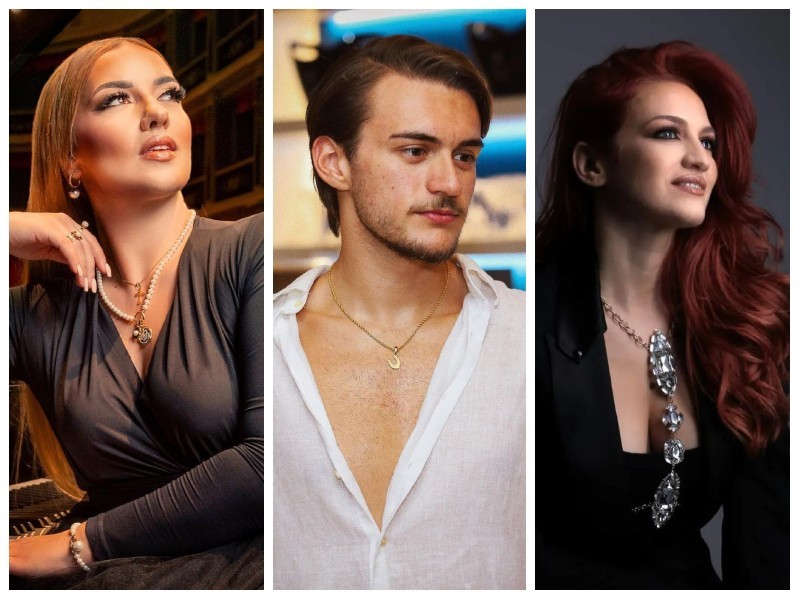Four Of The Most Iconic Eurovision Fashion Moments – wiwibloggs
For decades, Eurovision has not only been a platform to showcase music and performance – it has also been a great showcase of the latest fashion styles across Europe.
Year on year, we see mainstream trends making their way onto the stage: From the now iconic pink bucket hat worn by Kalush Orchestra frontman Oleh Psiuk in 2022, to the infamous Barbara Dex who literally had an entire award created in her honour (though relating to more questionable fashion moments).
Whether you like it or not, fashion is very much present in every form of the contest. And without it, we perhaps wouldn’t have the spectacle we recognise today. So enjoy this list of some of the most iconic fashion moments that have shaped the contemporary contest.
Iconic Eurovision fashion
Dana International – Jean Paul Gaultier (1998)
After her win at the 1998 contest hosted in Birmingham, Dana International did something quite remarkable upon receiving the coveted trophy — using fashion as a way to represent an entire community.
Changing her frock at the last minute, she entered the stage in a sexy figure hugging black dress and bolero jacket, ordained in an array of multi-coloured parrot feathers. Designed by Jean Paul Gaultier, the dress is a reflection of queer identity and culture – with a likeness to the rainbow LGBTQ+ flag. Dana reprised her winning song “Diva” with open arms, an unapologetic message to those who criticised her participation.
Many media outlets at the time reported transphobic messages of hate about the songstress, all in an effort to discredit the self proclaimed diva and hide her from the public eye. Symbolically wearing the abuse ‘on her sleeve’, she was able to remove the power from these words, using them to empower her instead. Adding to this, Gaultier’s use of parrot feathers could be a symbol of self identity. In art, the bird is a symbol for the representation of your true self, and as the first transgender woman to win the Eurovision Song Contest she was doing just that.
Gina G – Paco Rabanne (1996)
It is frequently spoken about how the ’90s were a fashion revolution, and this also reigns true in the Eurovision world too. “Ooh Aah… Just a Little Bit” hitmaker Gina G struck gold upon her wardrobe choice when she took to the stage in Oslo back in 1996.
Rumour has it Gina randomly stumbled across the dress hanging in the Warner Music offices. The custom Paco Rabanne gown had been rejected and left there by none other than Cher (yes, Cher!). Created in a hand crafted chain mail style, this is a signature of the Paco Rabanne brand – taking historical elements and combining with a space-age aesthetic. Early renditions of the dress were seen in the 1966 collection, where the newly found technique of linking metal and plastic shapes optimised the avant-garde sensibility of 60’s fashion.
In the case of the United Kingdom’s hopeful, the dress perfectly alluded to a mirror ball – only enhancing the disco aesthetic of Gina G’s performance. Finishing eigth in the grand final, the song has gone on to be globally recognisable.
If Cher had never left the dress, who knows what Gina would’ve worn. Truly some iconic Eurovision fashion trivia!
ABBA – Inger Svenneke (1974)
The costumes for “Waterloo” are arguably some of the most recognisable symbols of pop culture in modern music. Even non-Eurovision fans are able to reference the flared bell bottoms, platform boots and star shaped guitar.
It was Frida who first spotted her classic off-white jacket with dazzling metallic detailing at the Stockholm store Gröna Moln Och Blått Gräs (Green Clouds and Blue Grass). Fashion designer Inger Svenneke, who is very often considered to be the Swedish version of Vivienne Westwood, was head designer of the brand at the time. The group loved her creations, so they decided to ask Svenneke to design the rest of the band’s wardrobe for Eurovision 1974.
It’s now a look that has ties to the Scandinavian fashion tropes, defining the bands visual identity throughout their career and even lives in our memory all these years later.
Eleni Foureira – Vrettos Vrettakos (2018)
Eleni Foureira set the Eurovision stage alight back in 2018 with her pop banger “Fuego”. With an equally hot outfit to match, it’s clear why the entry ended in second place on the night of the grand final.
Hand crafted by Vrettos Vrettakos, Eleni’s catsuit depicts crystal encrusted flames engulfing her body and contouring every curvaceous asset. A small tight pleather jacket sits just under the armpit, with long sleeves to create interesting proportions. This look could be seen as a major factor in how the entry had such a massive elevation when translated to the Eurovision stage.
It’s often very hard to correctly execute all aspects of a performance – but the Cypriot team managed to do this with ease. One of the most iconic performances in recent memory, many fans compare all bops to the standard of “Fuego”.
Do you agree with our list? What are some of your most memorable fashion moments from the Eurovision stage? Shout out in the comments below.

Popular Stories Right now
Copyright :

